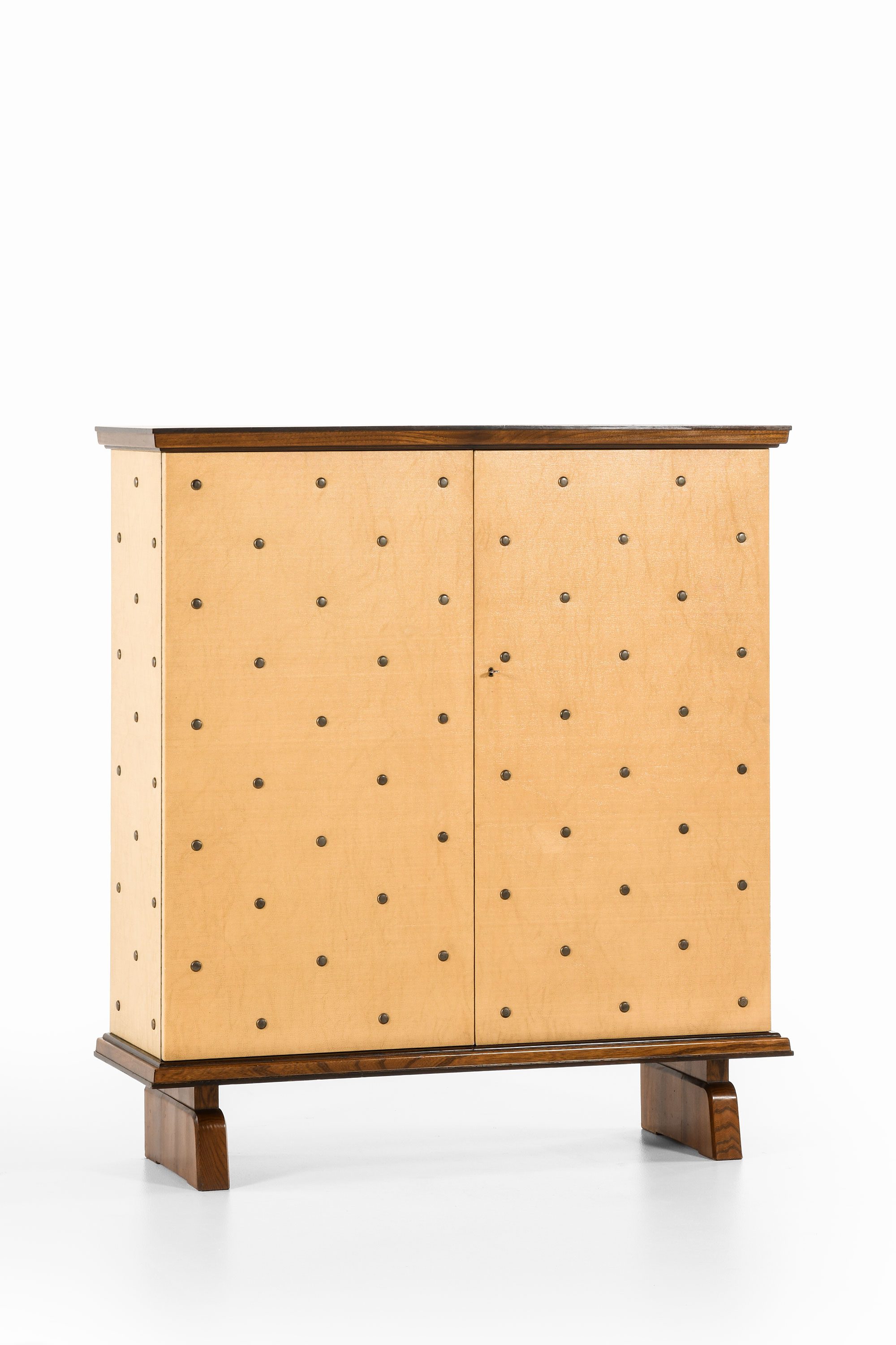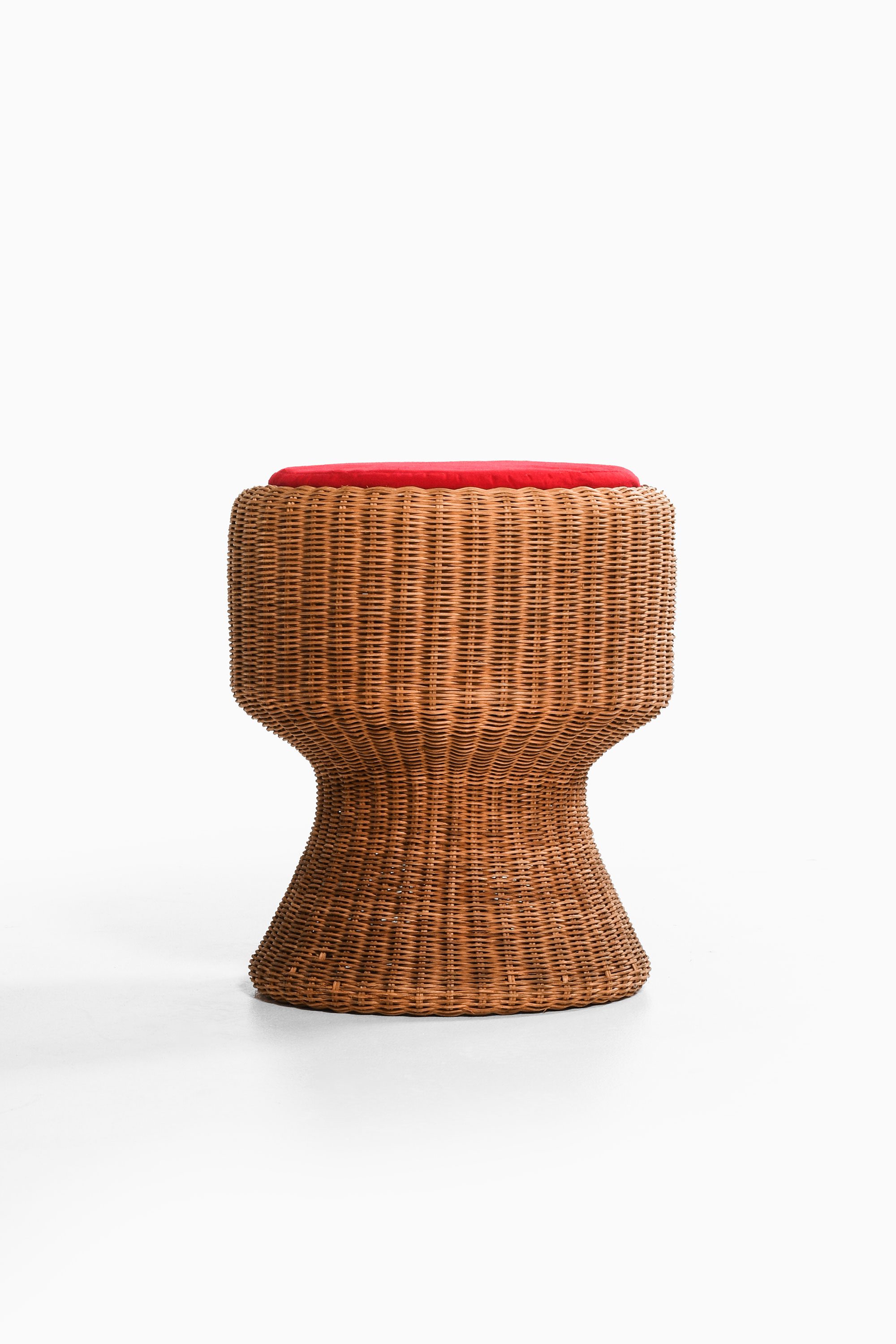Otto Schulz cabinet
This very rare cabinet, designed by Otto Schulz and produced by Boet in Sweden, is a remarkable testament to early Scandinavian modernism, distinguished by its material experimentation, decorative restraint, and finely balanced proportions. It reflects Schulz’s distinctive aesthetic—at once forward-thinking and rooted in artisanal tradition—and offers an exemplary instance of his unique approach to furniture design during the mid-20th century.
The cabinet is constructed from a combination of elm and oak, both chosen for their expressive grain and structural integrity. Certain portions of the wood are stained to create contrast, enhancing the overall depth and warmth of the piece. The cabinet’s surfaces are clad in a light-colored imitation leather, lending a soft, tactile quality that contrasts beautifully with the firmer geometry of the wood structure. This leather is adorned with Schulz’s signature Bo-point brass rivets, laid out in a precise, symmetrical grid. These brass elements not only serve as decorative accents but also articulate the surface rhythmically, embodying Schulz’s philosophy of using structural ornamentation in a refined and integrated manner.
The form of the cabinet is rectangular and well-scaled, with clean, linear outlines that underscore the Swedish modernist emphasis on simplicity and function. The structure stands on short, subtly curved wooden legs that give the piece a grounded, architectural quality. Despite its ornamental details, the overall appearance remains minimal, elegant, and deeply considered—a hallmark of Schulz’s mature style.
The color palette is natural and harmonious. The light tan imitation leather provides a soft visual field that is contrasted by the darker tones of the stained elm and oak. This interplay of warm hues and material textures enhances the cabinet’s depth and highlights the richness of its craftsmanship. The wood grain remains visible and expressive, particularly where not covered by the leather, adding a layer of organic character to the otherwise restrained composition.
Functionally, the cabinet features a highly organized and well-finished interior, with compartments and drawers that reflect the same level of design rigor as the exterior. The craftsmanship is meticulous throughout, consistent with the standards of Boet, the Gothenburg-based firm that Schulz co-founded and led as artistic director. Boet was known for producing modern furniture that combined technical precision with aesthetic innovation, and this piece exemplifies that mission.
In terms of condition, the cabinet is very well-preserved. The imitation leather surface shows minor signs of age-appropriate wear—such as soft patina and subtle surface marks—which enrich its historical presence. The wood elements are in excellent structural condition, retaining their original tone and sheen, while the brass rivets remain intact and evenly patinated.
Notably, this model is documented in watercolor within the Otto Schulz collection held by the Röhsska Museum in Gothenburg (inventory number RKM 37:1486‑1970), confirming its provenance and design significance. This documentation further elevates the historical and cultural value of the cabinet.
The dimensions are 131.5 cm in width, 45.5 cm in depth, and 145 cm in height, which corresponds to approximately 51.8 inches wide, 17.9 inches deep, and 57.1 inches high.
Dimensions (cm) | W: 131.5 / D: 45.5 / H: 145 |
| Producer | Boet |
| Color | Yellow |
| Decade | 1930s |
| Country | Sweden |
| Style | Art Deco, Scandinavian Modern |
| Material | Brass, Elm, Imitation Leather, Oak |
| Item Number | 238675 |
Otto Schulz

















